Description
Buy Klow Blend Peptide at PeptideLabCo – Premium Research-Grade Peptide Blend for Scientific Studies
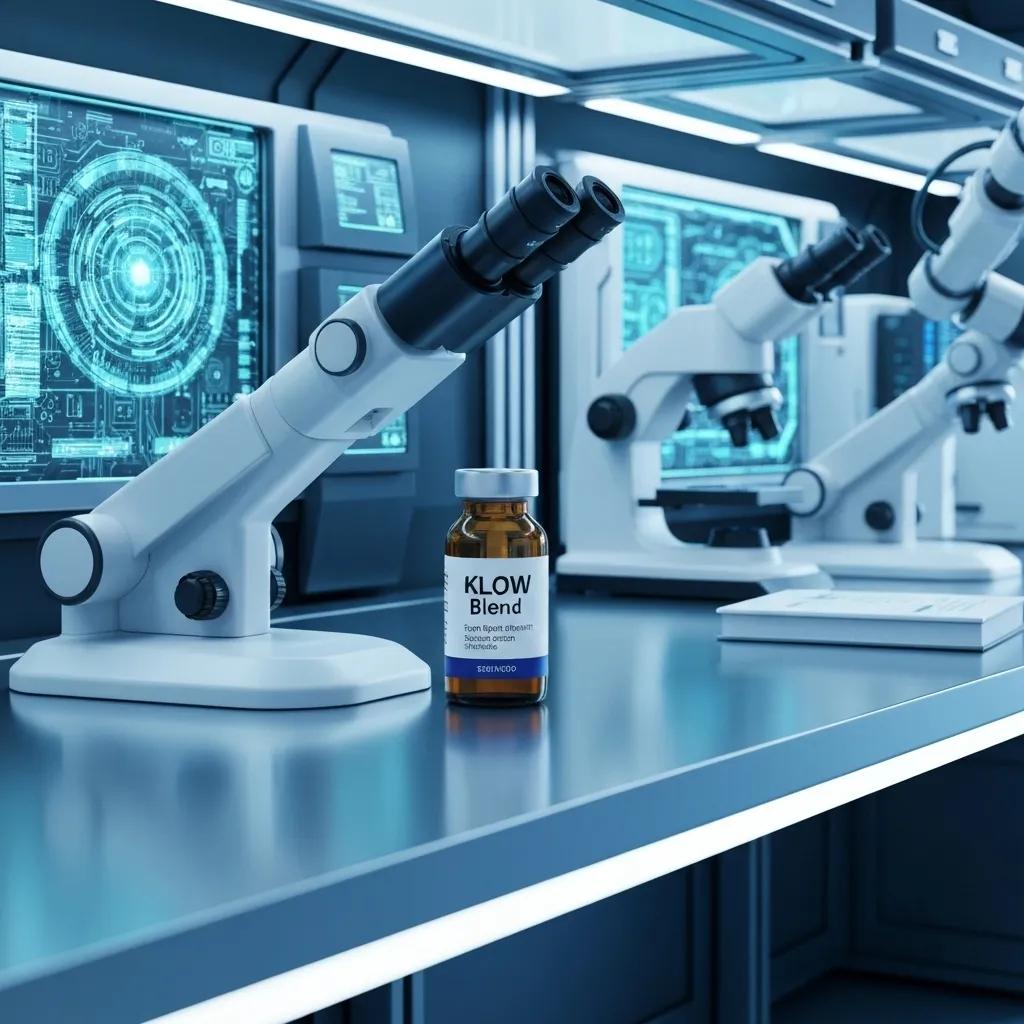
PeptideLabCo’s Klow Blend Peptide offers an all-in-one research solution by combining four well-characterized peptides—GHK-Cu, BPC-157, TB-500, and KPV—into a synergistic formulation designed for in-depth studies of tissue repair, inflammation modulation, skin health, and gut integrity. Researchers seeking high-purity compounds backed by transparent third-party lab data will find Klow Blend Peptide’s rigorous quality controls and detailed Certificates of Analysis ideal for reproducible protocols. This comprehensive guide explains the blend’s composition, mechanisms of action, comparative advantages, key research applications, quality assurance processes, ordering procedures, individual component profiles, practical considerations, and additional resources at PeptideLabCo—all structured to support your next scientific investigation.
What Is Klow Blend Peptide? Understanding This Synergistic Research Compound
Klow Blend Peptide is a proprietary research-grade combination of four distinct peptides formulated to enhance multiple biological pathways simultaneously. By stacking synergistic molecules, this blend maximizes experimental efficiency in preclinical models. For example, simultaneous activation of collagen synthesis, angiogenesis, cellular migration, and immune modulation can accelerate in vitro tissue‐regeneration assays compared to single-peptide treatments. This concept of a “blend” or “stack” facilitates multifaceted investigations into regenerative medicine, anti-inflammatory signaling, dermal repair, and gastrointestinal barrier studies.
Key components of Klow Blend Peptide include:
- GHK-Cu (50 mg)
- BPC-157 (10 mg)
- TB-500 (10 mg)
- KPV (10 mg)
These four peptides work together to address diverse research objectives, bridging regenerative and anti-inflammatory fields.
What Peptides Are Included in Klow Blend Peptide?
Researchers value precise formulations, and Klow Blend Peptide delivers defined quantities of each component:
- GHK-Cu (Copper tripeptide) – 50 mg
- BPC-157 (Body Protective Compound-157) – 10 mg
- TB-500 (Thymosin Beta-4 fragment) – 10 mg
- KPV (Lysine-Proline-Valine) – 10 mg
Each vial contains a lyophilized powder blend for reconstitution in sterile water or buffer. The balanced ratios reflect optimized synergy rather than single-molecule dominance, enabling multifaceted protocol design.
How Does Klow Blend Peptide Work? Mechanisms Behind Its Synergistic Effects
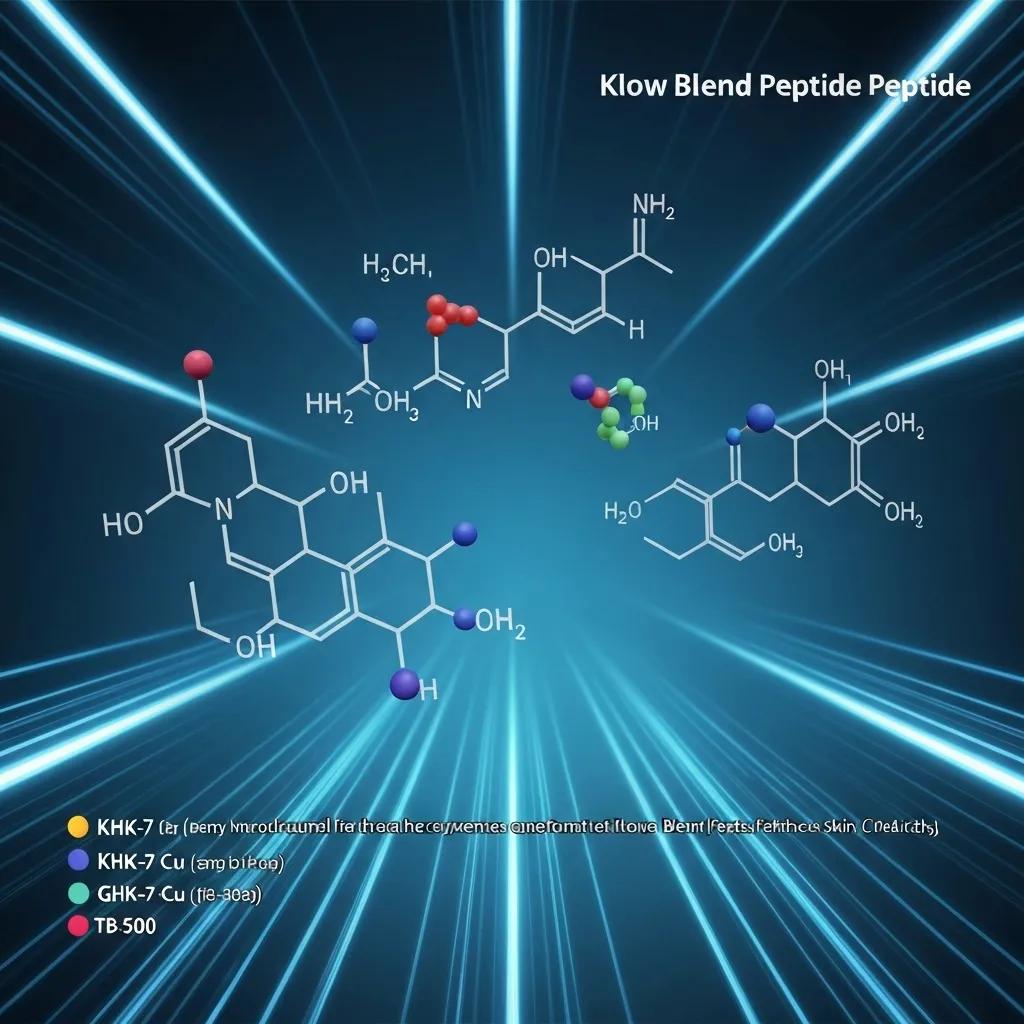
Klow Blend Peptide exerts its research impact through complementary mechanisms that converge on tissue repair and inflammation control.
| Peptide | Mechanism | Research Focus |
|---|---|---|
| GHK-Cu | Copper binding → collagen synthesis | Skin repair, angiogenesis, matrix remodeling |
| BPC-157 | Angiogenic peptide → vessel formation | Tendon/ligament healing, gut barrier integrity |
| TB-500 | Cell migration stimulation | Cellular migration, tissue regeneration |
| KPV | Anti-inflammatory signaling | Immune modulation, oxidative stress reduction |
Together, these pathways support accelerated wound-healing models, enhanced extracellular matrix deposition, and controlled inflammatory profiles, offering a cohesive platform for multifactorial research designs.
What Makes Klow Blend Peptide Different from Other Peptide Blends?
Several formulations focus on signal peptides alone, but Klow Blend Peptide’s unique inclusion of KPV elevates immune modulation studies.
| Blend | Components | Unique Feature | Research Benefit |
|---|---|---|---|
| Glow Blend | GHK-Cu, BPC-157, TB-500 | Signal-only stack | Collagen synthesis, angiogenesis, cell migration |
| Klow Blend | GHK-Cu, BPC-157, TB-500, KPV | Added immunomodulatory tripeptide | Controlled inflammation, improved barrier integrity |
By integrating KPV, Klow Blend Peptide enables researchers to explore both regenerative and anti-inflammatory endpoints within the same experimental framework.
What Are the Key Benefits of Klow Blend Peptide for Research?
By combining regenerative and anti-inflammatory peptides, Klow Blend Peptide delivers a multi-targeted research tool that can streamline study designs.
- Enhanced tissue regeneration
- Accelerated wound-healing assays
- Robust inflammation reduction
- Improved skin-health models
- Strengthened gut-barrier experiments
How Does Klow Blend Peptide Support Tissue Regeneration and Wound Healing Research?
Klow Blend Peptide promotes tissue regeneration by synchronizing extracellular matrix formation and cell migration. In wound-healing models, GHK-Cu drives collagen I and III deposition while TB-500 enhances fibroblast motility, together reducing closure times. This dual-action facilitates reproducible assessments of scaffold materials and growth factor combinations without separate peptide dosing steps.
What Are the Anti-inflammatory and Immune Modulation Effects of Klow Blend Peptide?
The inclusion of KPV provides potent anti-inflammatory activity by downregulating NF-κB signaling and reducing pro-inflammatory cytokines like IL-6 and TNF-α. BPC-157 further stabilizes barrier functions and modulates immune cell trafficking in gut-inflammation assays. Combined, these effects yield controlled inflammation models ideal for testing novel immunomodulatory compounds.
How Does Klow Blend Peptide Enhance Skin Health and Anti-aging Research?
GHK-Cu in the blend stimulates fibroblast proliferation and matrix metalloproteinase regulation, promoting dermal thickening and elastin production in ex vivo skin explants. TB-500’s cell-migration capacity supports remodelling assays, reducing scarring parameters. These synergistic actions make Klow Blend Peptide valuable for anti-aging study designs.
Pickart, L., & Lovejoy, F. (2005). Copper peptides.
What Role Does Klow Blend Peptide Play in Gut Health and Barrier Integrity Studies?
In gastrointestinal models, BPC-157 enhances epithelial restitution and mucosal healing, while KPV reduces oxidative stress and inflammatory cell infiltration. Researchers can leverage these combined activities to simulate ulcerative colitis or leaky gut conditions with greater consistency and control.
Sikiric, P., et al. (2010). Body protective compound BPC 157 and its effect on the gastrointestinal tract.
How Is Klow Blend Peptide Purified and Tested? Quality Assurance and Lab Reports at PeptideLabCo

Klow Blend Peptide undergoes rigorous purification via high-performance liquid chromatography (HPLC) and analytical mass spectrometry to confirm peptide identity and purity. All batches are tested by accredited third-party laboratories, ensuring consistent quality across research protocols.
Key quality assurances include:
- HPLC purity ≥ 95%
- Mass spectrometry confirmation of molecular weight
- Endotoxin levels below 0.1 EU/mg
- Certificate of Analysis for each batch
These standards guarantee reproducible research results and compliance with accepted laboratory practices.
What Does 3rd-Party Lab Testing and Certificates of Analysis (COAs) Show About Klow Blend Peptide?
Independent lab reports verify each peptide’s concentration and confirm absence of contaminants such as heavy metals, microbial endotoxins, and unintended fragments. COAs detail batch-specific purity percentages, ensuring traceability for publication or regulatory review.
How Should Researchers Store and Reconstitute Klow Blend Peptide for Optimal Results?
Store lyophilized Klow Blend Peptide at –20 °C in a desiccated environment.
- Use sterile water or buffer at 4 °C.
- Add 2 mL per 80 mg vial to achieve 40 mg/mL.
- Gently swirl until fully dissolved (avoid vortexing).
- Aliquot into single-use tubes and store at –80 °C.
Proper handling preserves peptide integrity and activity throughout experimental workflows.
What Are the Legal and Ethical Guidelines for Using Klow Blend Peptide in Research?
Klow Blend Peptide is labeled for “research use only” and not for human consumption. Investigators must comply with institutional biosafety regulations, secure appropriate ethics committee approvals for animal or cell-based studies, and adhere to local guidelines governing controlled research substances.
How to Buy Klow Blend Peptide from PeptideLabCo? Ordering Process and Shipping Information
Purchasing Klow Blend Peptide is streamlined for academic and industry researchers. Orders placed via PeptideLabCo’s secure portal undergo verification to confirm research-only use, followed by prompt processing and shipment.
Steps to order:
- Submit purchase request with institutional credentials.
- Confirm research-use certification.
- Choose shipping option based on temperature requirements.
- Receive tracking information and COA access post-shipment.
PeptideLabCo maintains cold-chain protocols to ensure sample integrity from warehouse to lab bench.
Who Can Purchase Klow Blend Peptide? Eligibility and Research Use Requirements
Only qualified researchers affiliated with accredited institutions or laboratories may purchase Klow Blend Peptide. Buyers must certify that the product is intended exclusively for in vitro or ex vivo studies and not for human or veterinary therapeutics.
What Are the Available Packaging Sizes and Pricing Options?
Klow Blend Peptide is available in:
- 80 mg per vial
- 200 mg multi-vial packs
- Custom bulk orders upon request
Volume discounts apply for orders exceeding 1 g, and pricing tiers accommodate both pilot studies and large-scale experiments.
How Does PeptideLabCo Ensure Secure and Timely Delivery of Klow Blend Peptide?
All shipments use temperature-controlled packaging with data-loggers to monitor cold-chain conditions. PeptideLabCo partners with specialized carriers to guarantee next-day delivery options and minimize transit risks for sensitive reagents.
What Are the Individual Peptides in Klow Blend and Their Research Applications?
Examining each component peptide provides insight into targeted experimental uses and mechanistic endpoints.
What Is GHK-Cu and Its Role in Collagen Synthesis and Skin Repair Research?
GHK-Cu is a copper-binding tripeptide that upregulates collagen I/III genes and activates metalloproteinase inhibitors, making it ideal for dermal regeneration assays and angiogenesis studies in skin explant models.
How Does BPC-157 Support Tendon, Ligament, and Gut Healing Studies?
BPC-157 accelerates angiogenesis by upregulating VEGF, enhances fibroblast migration in musculoskeletal injury models, and stabilizes tight junction proteins in intestinal epithelium, providing versatile applications across tissue-repair studies.
What Are TB-500’s Effects on Tissue Repair and Cell Migration in Research?
TB-500, a fragment of thymosin beta-4, increases actin polymerization and cell motility, facilitating rapid re-epithelialization in wound-closure assays and promoting neural progenitor migration in nerve-regeneration experiments.
How Does KPV Contribute to Anti-inflammatory and Immune Modulation Research?
KPV exerts potent anti-inflammatory effects by inhibiting NF-κB activation and reducing cytokine release, making it suitable for in vitro models of sepsis, colitis, and oxidative-stress studies.
What Are Common Questions About Klow Blend Peptide?
Researchers often seek clarity on safety, handling, comparative attributes, and potential risks to design reliable protocols.
Is Klow Blend Peptide Safe for Research Use?
Klow Blend Peptide exhibits low cytotoxicity at typical assay concentrations (1–10 µg/mL). Endotoxin testing confirms levels below 0.1 EU/mg, supporting its integration into cell-culture and organ-on-chip models without inflammatory artifacts.
How Do You Properly Reconstitute Klow Blend Peptide?
Reconstitution requires sterile water or buffer at 4 °C, gentle swirling until complete dissolution, and immediate aliquoting into single-use tubes stored at –80 °C. This approach preserves biological activity and minimizes freeze-thaw degradation.
What Are the Differences Between Klow Blend and Glow Blend Peptides?
Klow Blend Peptide adds KPV to the Glow Blend backbone (GHK-Cu, BPC-157, TB-500), extending its research scope to include anti-inflammatory and immune modulation assays alongside regenerative endpoints.
Are There Any Known Side Effects of Klow Blend Peptide in Research Settings?
No adverse effects have been reported in preclinical and in vitro models at recommended concentrations. Researchers should monitor pH and osmolarity after reconstitution to prevent confounding cellular responses.
Where Can Researchers Find Additional Resources and Related Peptides at PeptideLabCo?
PeptideLabCo offers a curated suite of informational assets and related compounds to support extended research needs.
How Does Klow Blend Peptide Compare to Other Peptide Blends Like Glow Blend?
A direct comparison highlights KPV’s contribution to inflammation control, offering an expanded research matrix for studies that require simultaneous regenerative and immunomodulatory endpoints.
Where to Access Detailed Research on Individual Peptides GHK-Cu, BPC-157, TB-500, and KPV?
Each component peptide has a dedicated resource page at PeptideLabCo, featuring mechanistic summaries, CAS numbers, molecular weights, relevant citations, and application notes for accelerated protocol development.
What Is the Peptide Glossary and How Can It Help Researchers Understand Key Terms?
The Peptide Glossary provides standardized definitions for technical terms—such as “angiogenesis,” “extracellular matrix remodeling,” and “tight junction integrity”—facilitating clear communication and accurate interpretation of experimental outcomes.
Klow Blend Peptide’s integrated design streamlines complex research workflows by combining targeted regenerative and anti-inflammatory mechanisms within a single formulation. Rigorous third-party testing, clear handling guidelines, and transparent documentation support reproducible and ethically compliant studies. PeptideLabCo’s ordering and delivery infrastructure ensures secure, research-only distribution, while extensive component profiles and educational resources empower investigators to design robust experimental protocols. Leveraging Klow Blend Peptide fosters efficient exploration of tissue repair, inflammation control, skin health, and gut barrier integrity in preclinical research.


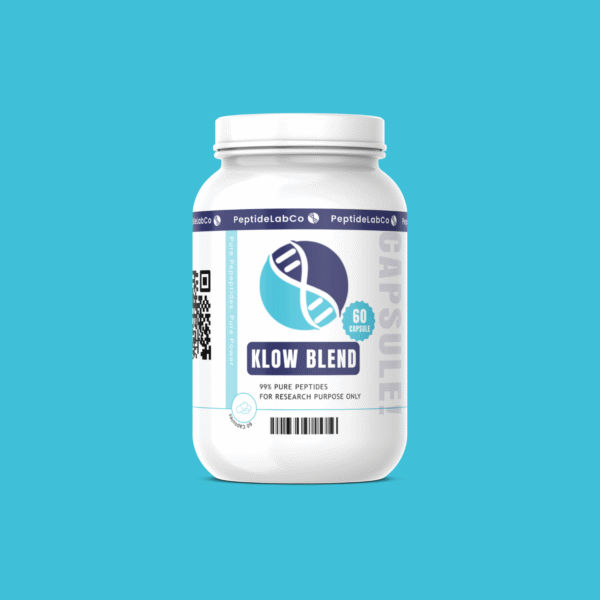
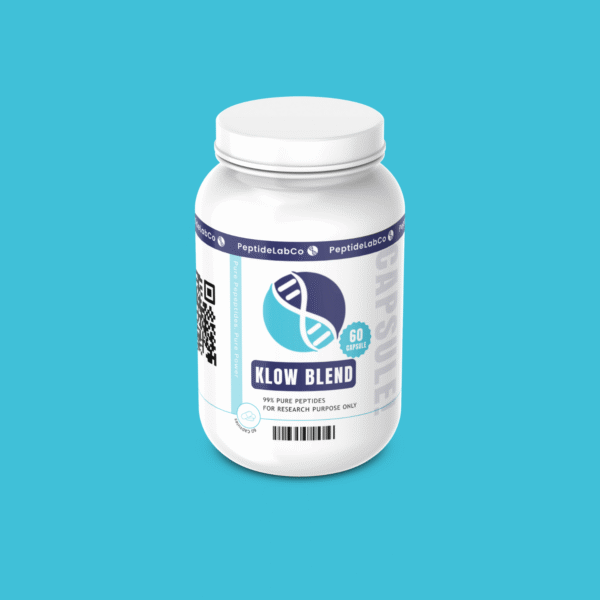
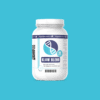
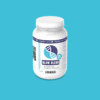

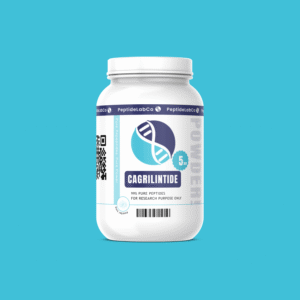

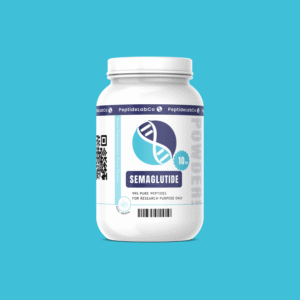
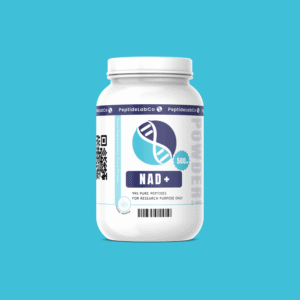
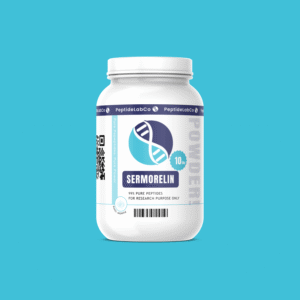

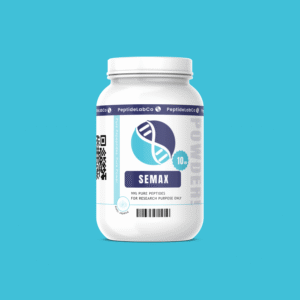
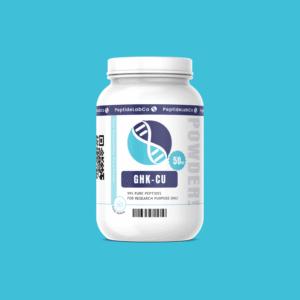
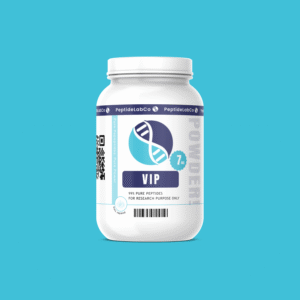
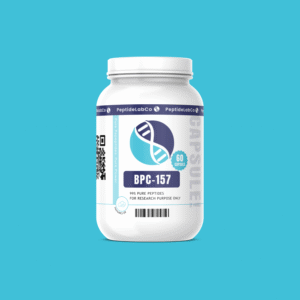
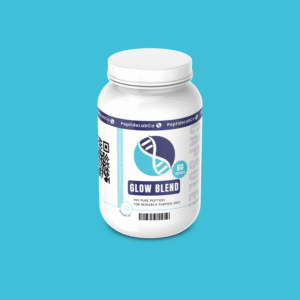
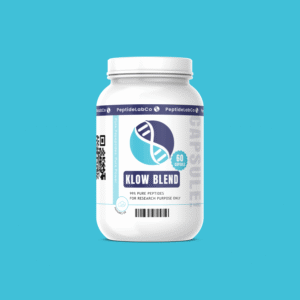
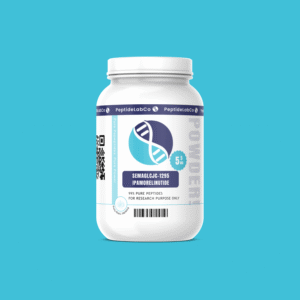
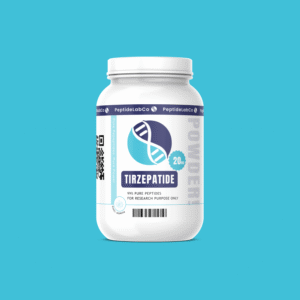
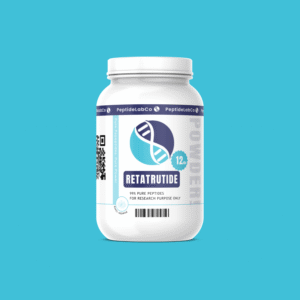
Reviews
There are no reviews yet.